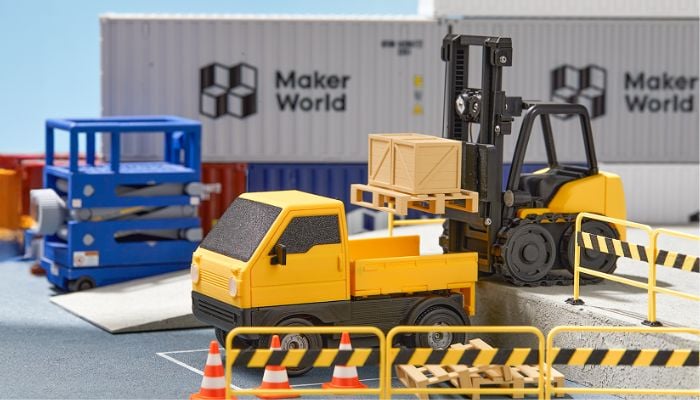Bambu Lab Breaks Into the World of Toys With CyberBrick™

Toy cars, tractors, fire trucks or radio-controlled airplanes—these toys are enjoyed worldwide. But what if you want to turn play into an enjoyable learning time to spend with the family? This is the idea that prompted MakerWorld, the community platform started as a spin-off of Bambu Lab, to launch a new brand on KickStarter: CyberBrick™. CyberBrick is a modular ecosystem that combines 3D printing, electronics, and programming to create interactive toys and gadgets that will launch on KickStarter on March 15 and shipments will start the following month.
The goal? To enable users, both children and adults, to “learn by playing” and explore programming and electronics while deepening their knowledge of STEM disciplines. It would fulfill the dual goal of developing the child’s and adult’s skills while providing moments of family fun and play.

MakerWorld chose to launch this new brand on Kickstarter to assess the market potential and identify the audience interested in the universe of customizable gadgets and games. The CyberBrick team also plans to gather valuable feedback from makers to refine the offering and thus develop an increasingly community-friendly experience.
From 3D Printing to Programming in MicroPython
But how does CyberBrick™ work? First, users are offered either a do-it-yourself kit for those who already have a 3D printer at home, or complete sets with printed parts included. Those who already have a 3D printer will be able to print both joysticks and toys. The models, made available in CyberBrick’s library and also available in the MakerWorld platform, are numerous and always new.
Any member of the community can offer their model for sale and make it available within the library, allowing makers to turn their creativity into a source of income. The designs are meant to be compact and modular, thus requiring no soldering or screws.
CyberBrick has created three original models that can be used by both experienced and novice makers: Fork Lift, a forklift; Truck, a pickup truck; and Soccer Bot, a game forklift with which you can pick up mini balls and score in the opponent’s goal. Once the model is printed you have to enrich it with the hardware system, which consists of different types of microcontrollers provided by the brand.
Next you have to connect the toy with wires to a battery and possibly lights to make it 100 percent interactive and electric. The toy can be easily configured via a Bluetooth connection to the app. However, if one wanted to make implementations or enhancements to the controls, more experienced makers can turn to MicroPython, a software with a programming language based on Pyton 3 and optimized to handle microcontrollers.
The CyberBrick™ ecosystem is designed to progress from difficulty: starting with the use of 3D printing, moving on to learning to code using MicroPyton, and then to creating and uploading your own personal projects to share with the community.
Moreover, Bambu Lab created the CyberBrick™ brand not only to turn play into an educational experience, but also to make it as sustainable as possible by minimizing plastic waste. The company aims to make sustainable changes in the toy world through 3D printing and modular design, offering an environmentally friendly alternative to traditional disposable toys.
Dr. Tao, CEO of Bambu Lab, explains, “We’re cutting out the need for manufacturing plants, transportation, and retail, significantly reducing waste and carbon footprint. This distributed manufacturing approach turns 3D printers into personal manufacturing hubs, providing endless possibilities, while minimizing environmental impact.”
Bambu Lab therefore seeks to expand its user base more and more, targeting especially makers who have grown up and have families to cultivate a passion for 3D printing with their children as well, with a focus on sustainability. Something for which a few other companies have also been thinking about broadening their audience to the younger generation.
Last year xTool launched the M1, an all-in-one device suitable for children and teenagers useful for realizing their creative ideas. In addition, toy models suitable for all ages are popular online on sites such as Thingiverse or Cults3D. Could Bambu Lab have tapped into a new market segment?
All that remains now is to wait and see if CyberBrick™ will succeed in winning over the public. The success of this project will depend not only on attracting the community of already experienced and loyal makers to the company, but, more importantly, to bring to itself new users curious to explore the world of 3D printing.
What do you think of CyberBrick™? Let us know in a comment below or on our LinkedIn, Facebook, and Twitter pages! Don’t forget to sign up for our free weekly Newsletter here, the latest 3D printing news straight to your inbox! You can also find all our videos on our YouTube channel.
*All Photo Credits: CyberBrick™






